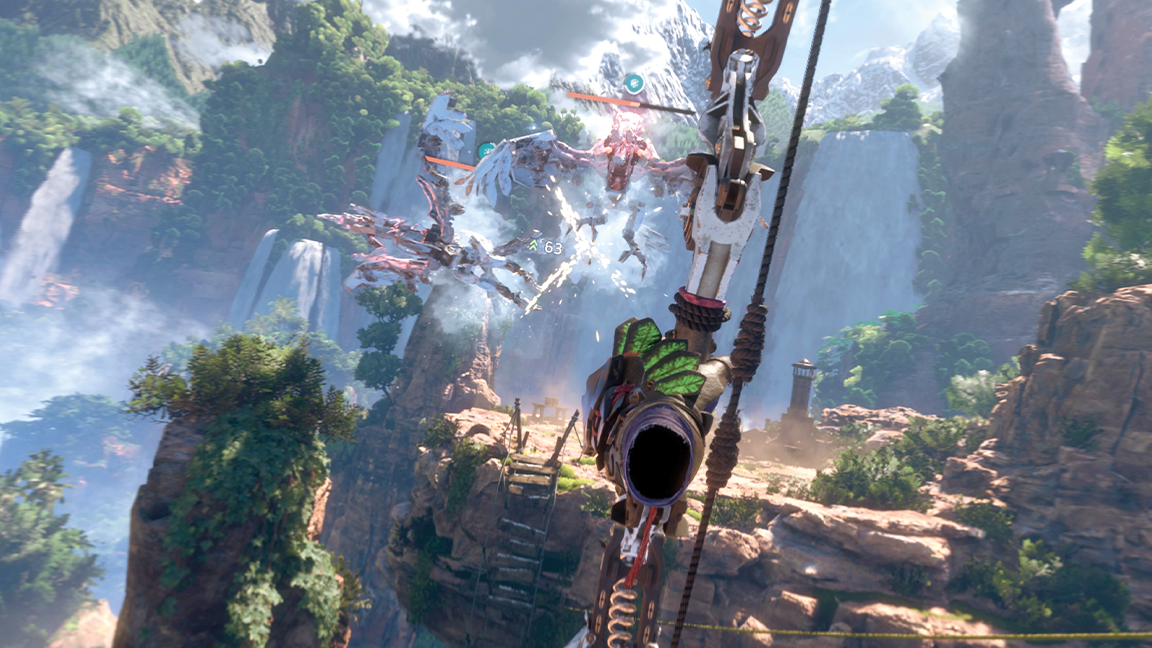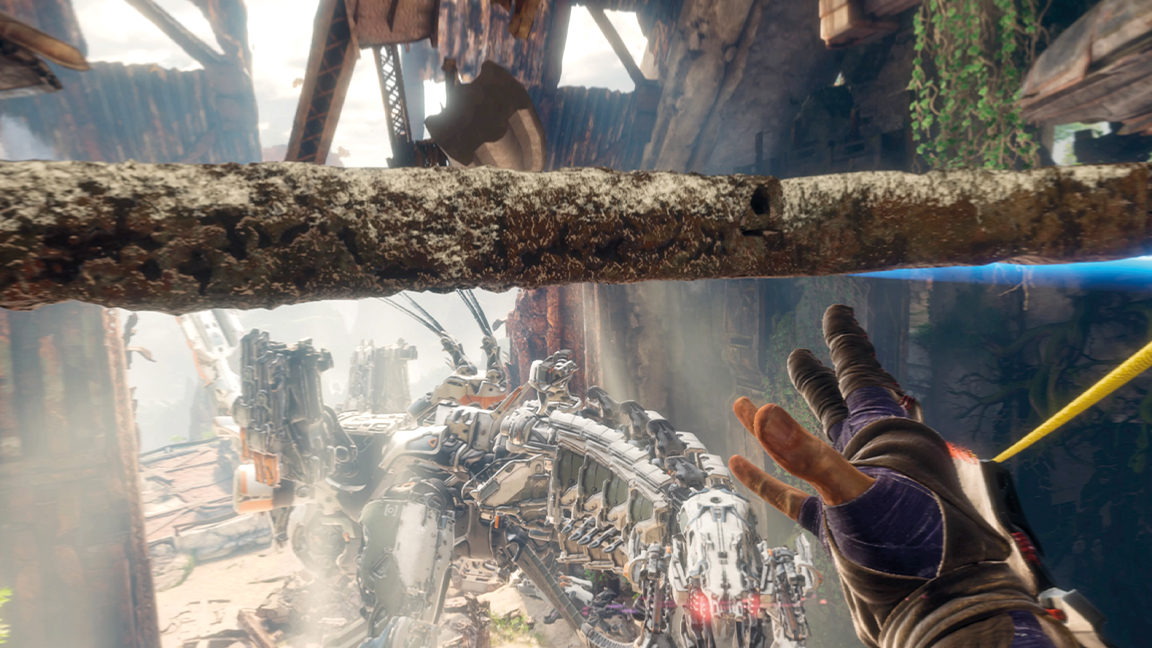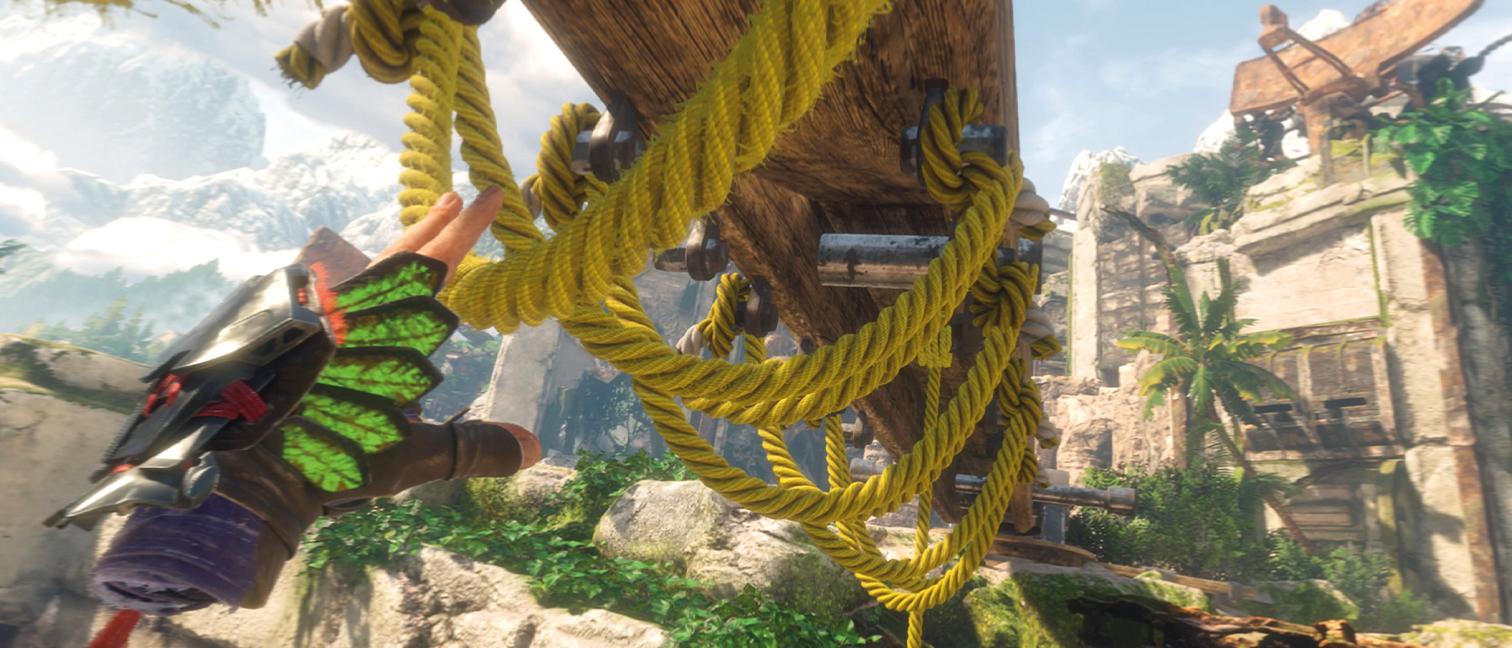Our Verdict
Horizon Call of the Mountain on PSVR 2 may feature barebones combat but this doesn’t get in the way of the genuinely interesting clambering to be had throughout the story. If you're looking for a game to showcase everything your new PlayStation VR 2 can do, Horizon Call of the Mountain is the game to buy.
For
- All of PSVR 2's tech is out to use
- Technically very impressive
- A physical and rewarding game
Against
- Less a game, more an experience
Why you can trust Creative Bloq
You’ve got to hand it to Horizon Call of the Mountain, when it comes to making you put your digits to work few games are quite as good as this clamber-’em-up. While it might be a bit of a one-trick Strider, that trick is constantly presented in new and interesting ways across its lengthy (especially for a VR title) single-player campaign.
Horizon Call of the Mountain is one of those classic first-party launch games that manages to showcase and make use of every piece of new tech, in this case its PSVR 2's haptics, eye-tracking, and more (read more in our 'PSVR: everything you need to know' guide. It's the kind of game developers will look at and be inspired by, a kind of template for future PSVR 2 games to make use of and reference.
You play as Ryas, a Shadow Carja who’s been broken out of prison and offered a chance to redeem himself for the role he and the rest of the Shadow Carja had as antagonists in previous game Horizon Zero Dawn. While you never get to see yourself, he’s full of character as he grumbles to himself through the adventure, on the tracks of his brother who went missing while investigating strange occurrences taking place on – you guessed it – a mountain.

At first, Horizon Call of the Mountain introduces itself like a theme-park ride. While visually the world is amazing, the boat ride introduction feels a bit old-school. And when Aloy makes a cameo early on to give you some information, it almost feels like when a theme park employs a lead actor to perform a piece to camera in the middle of a licensed movie ride.
However, when characters aren’t speaking to you between missions, everything is very hands-off, leaving you to get hands-on, and into the groove of what you’ll be doing: climbing, and a whole lot of it.
Prepare to look up a lot and wave your arms in the air like nobody’s business. While standing and seated modes are available, we can’t imagine playing any way other than seated, given how constantly looking up and around for handholds comes close to making us fall over when standing. Simply reach out and hold down one Sense controller’s trigger and you’ll lock into place, then reach out with the other to grab the next handhold and use its trigger to switch between the two.
Finding where to grab next, and working your way across surfaces, forms the bulk of the game. As you progress, varied surfaces, from icy cliffs to rusted machines, add complications, as do the different types of climbing tools you use. You can get quite quick when you get used to it, stretching your arm out for the next bit of ledge or even risking a hop into the air to gain an extra couple of inches.
The first tool you’ll employ are the climbing axes, which you pull out by reaching over your shoulder mid-climb and grabbing. After that, it’s just a matter of sinking them into the rock. There’s a delightful heft to striking surfaces.

Other climbing tools are more hit-and-miss, mostly due the cumbersome inventory management system that requires you to press a button to bring up an equip menu for your
hand, then hold the trigger for a while to summon the item you need out of the air. With multiple grapples, a bladed boomerang, and other tools to choose from, it feels bloated rather than elegant, and the menu weakens the sense of immersion. We’d have preferred fewer, more readily available, choices to avoid breaking flow.
Combat does feature, but it’s barebones, locking you into moving in either a circle around an arena or a straight line (exclusively for flying enemies). Pull out your bow by reaching over your shoulder, and grab an arrow to nock using your other hand. Just lift, pull, and shoot.
While aiming can take some getting used to, it’s surprising how quickly you can take to it, adjusting your aim in the moment. It feels very cool to swiftly pull out your bow, nock, and score a critical hit (Legolas, who?). That said, given your arms will probably be sore with all the climbing, holding out the bow can only add to it.
Horizon Call of the Mountain is at its best when it’s giving you interesting structures to climb. And, fortunately that’s the bulk of what you do, throughout all sorts of thrilling (almost Uncharted-like) set-pieces. With collectibles and optional paths to entertain when you revisit as you poke around each distinct mission, you’ll climb, climb, and climb again. This is definitely one of the best games on PSVR 2.
This article first appeared in Play Magazine issue 25. You can subscribe to the print edition, digital version, or save even more with the print/digital bundle – whatever you choose, you’ll be receiving an unprecedented trove of dedicated PlayStation coverage every month.
Read more:
- PSVR 2 review: next-gen virtual reality has arrived

Thank you for reading 5 articles this month* Join now for unlimited access
Enjoy your first month for just £1 / $1 / €1
*Read 5 free articles per month without a subscription

Join now for unlimited access
Try first month for just £1 / $1 / €1
out of 10
Horizon Call of the Mountain on PSVR 2 may feature barebones combat but this doesn’t get in the way of the genuinely interesting clambering to be had throughout the story. If you're looking for a game to showcase everything your new PlayStation VR 2 can do, Horizon Call of the Mountain is the game to buy.

Games Editor on GamesRadar+ and former PLAY editor, Oscar Taylor-Kent first joined Official PlayStation Magazine in 2018, and was involved with the long-standing mag’s rebrand into PLAY before becoming editor. Despite being a PlayStation expert (and noted PS Vita apologist), he’s got fingers on many buttons, having also written for SFX, PC Gamer, Kotaku, Waypoint, Official Xbox Magazine, GamesMaster, PCGamesN, and Xbox to name but a few. When not knee deep in character action games, JRPGs, and visual novels, he’s often found reading books, manga, or binging anime. His current favourite games include Devil May Cry, Persona, Ace Attorney, and Hakuoki.
- Ian DeanEditor, Digital Arts & 3D

